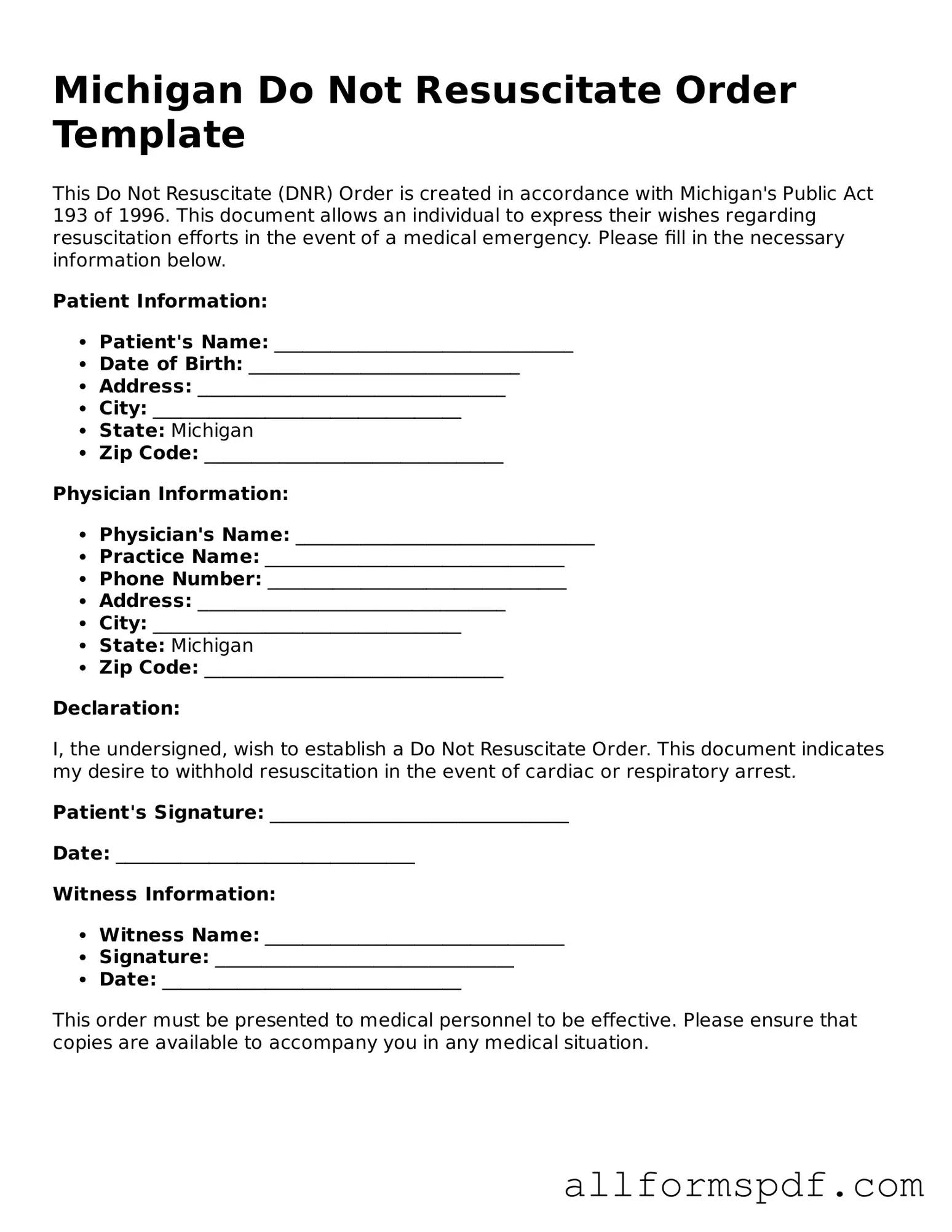Fillable Do Not Resuscitate Order Form for Michigan
A Michigan Do Not Resuscitate Order (DNR) form is a legal document that allows individuals to express their wishes regarding resuscitation efforts in the event of a medical emergency. This form ensures that if a person is unable to communicate, their preferences about life-sustaining treatments are respected. Understanding the DNR process is essential for both patients and healthcare providers to ensure that care aligns with the individual’s values and desires.
Create My Do Not Resuscitate Order Now
